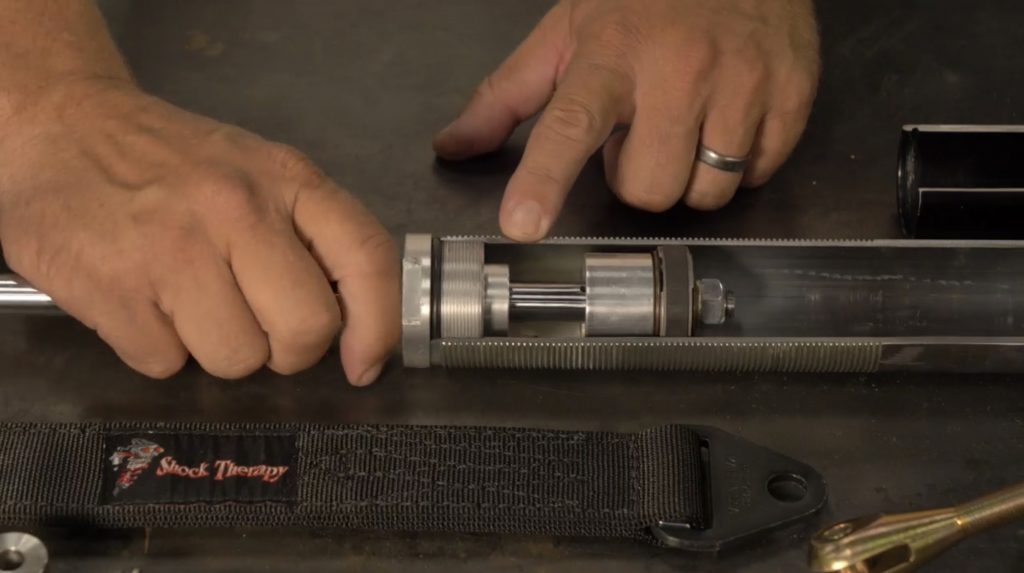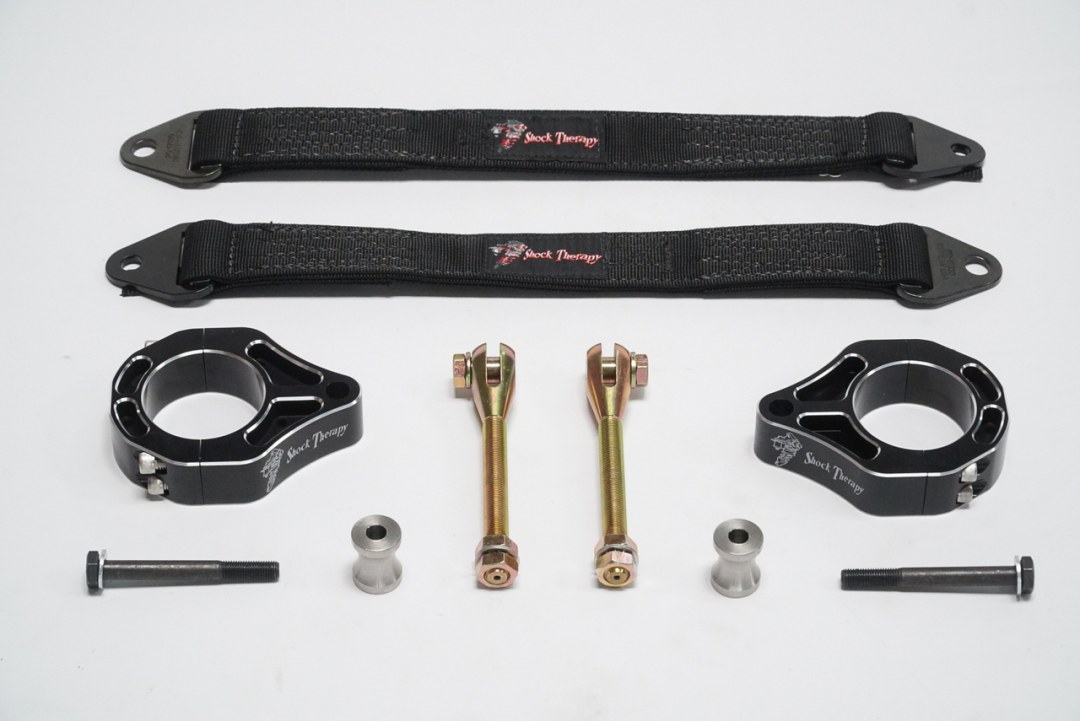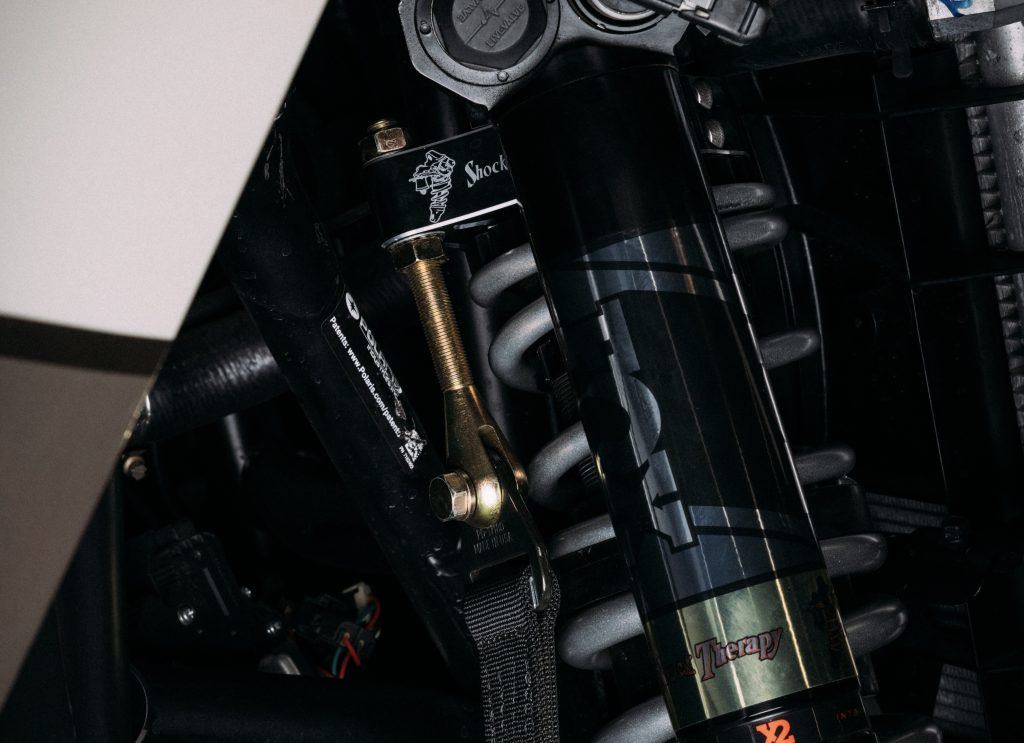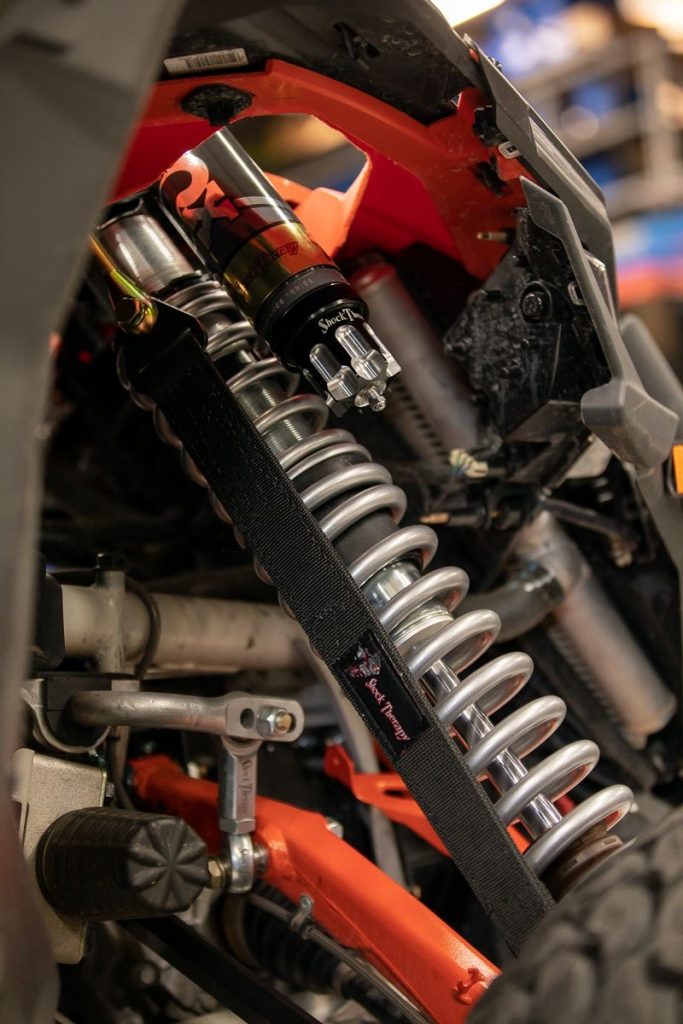If you’ve driven UTVs long enough, you’ve probably heard the noise that comes from your shocks when the suspension drops out and the full weight of the tire, wheel, and suspension hangs off the shock. When that happens, the shock tops out, and you hear that tell-tale ‘clunk.’

The top-out system employed by shock manufacturers cannot handle anything over OEM-designated tires and wheels
UTV shocks from FOX and Walker Evans, for example, are designed for OEM wheels, tires, and suspension. If you upgrade to larger tires and wheels or heavy duty a-arms –– and thus add more weight –– the force exerted on the shock as it tops out increases and the methods used by shock manufacturers to top-out gracefully cannot handle the added load, resulting in a very evident clunk.
While this noise on its own is annoying enough, it can also cause damage to the shock. Over time, it inevitably leads to a critical failure. Eventually, the little piece of shock shaft whose nut holds the whole piston assembly together will shear off right at the washer; the piston will pop off and the entire shaft comes right out of the shock.
Limit straps are designed to arrest the suspension and shock system from hitting full extension, and can also stop the system from extending past the maximum CV angle.
However, the ostensibly simple job of arresting the shock prior to full-extension with any given strap presents a host of problems to consider –– from adjustability and the location of its attachment point, to the necessary maintenance of factory geometry so as to reduce leverage.
We searched around for options and found that Shock Therapy has the most complete system. Plus, they make them for most UTV models on the market, including most Polaris RZR, Can-Am Maverick X3, Kawasaki KRX1000, Yamaha RMAX, Honda Talon, and more.
Limit Straps from Shock Therapy:
First and foremost –– and as you’d expect –– the limit straps stop clunk, thus saving your shock in the long run and potentially preventing you from a costly critical failure. Whichever limit strap on the market, it will stretch after some use from its original length from when purchased brand new. Intentionally buying shorter straps in anticipation of natural stretch over time isn’t a great option, as one inch of strap can translate to up to two inches of suspension travel reduction. Interestingly, from our research, Shock Therapy makes the only limit strap that is completely adjustable at the shock body mount.
Additionally, their patented billet aluminum upper clamp attaches to the body of the shock at the head, so you won’t have to worry about welding. The clamps are also ‘clock-able’ so they can spin around to clear body panels/other clearance items during installation.
As opposed to limit straps that connect to the frame or some other inbound location on the car, which increase the leverage on the strap, Shock Therapy’s limit straps remain in parallel with the shock itself –– thus retaining optimal geometric alignment and increasing strap life.
Shock Therapy also employs a unique tether design to handle excess slack. When the shock is compressed and the strap becomes looser, issues can arise with it getting caught on sway bar links, brake lines, or anything else in the way. Then, when you jump, for example –– and it extends –– it will rip it right off. Shock Therapy thus created a patented extension tether design that keeps the slack of the limit strap in position.




